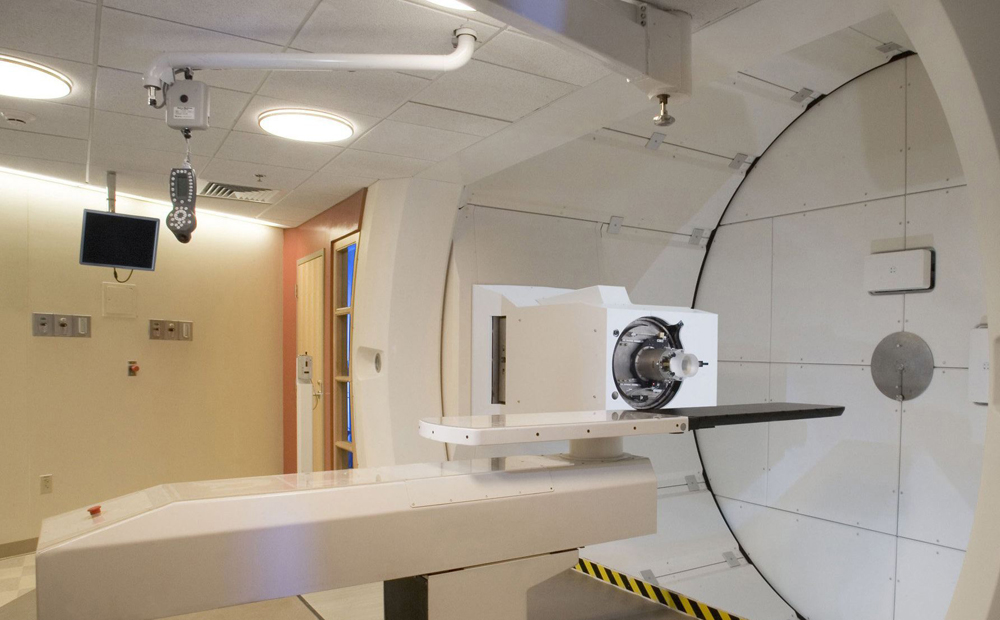Proton therapy technology is a kind of radiotherapy, and it is an internationally recognized cutting-edge technology in radiotherapy. Proton therapy belong to particle beams. Different from traditional photon beams, particle beams can form energy Bragg peaks, which can be used for intensive blasting of tumors. while reducing damage to healthy tissue.
Compared with the century-old traditional radiotherapy, Proton therapy therapy represents the highest technology and future trend of radiotherapy. Due to technical and price factors, it is only carried out in a few countries such as Germany, Japan and the United States, and it is used as a particle for medical purposes worldwide. There are only dozens of devices.
The principle of Proton therapy technology
When protons or carbon ions are accelerated to about 70% of the speed of light through a synchrotron, these ion rays are extracted and injected into the human body. Before reaching the tumor lesion, the radiation energy is not released much, but after reaching the lesion, the radiation will instantly release a large amount of energy, forming a large amount of energy. The energy release trajectory named “Bragg Peak”, the whole treatment process is like a “stereotactic blasting” for tumors, which can irradiate the tumor lesions powerfully, while avoiding the irradiation of normal tissues to maximize the curative effect.
Features of Proton therapy Technology
The internationally recognized and state-of-the-art radiotherapy technology is Proton therapy therapy. When it “strikes” solid tumors, it can irradiate the tumor lesions strongly, while avoiding normal tissue irradiation, so as to maximize the curative effect.
Tumors that can be treated by Proton therapys
1. Proton therapy radiotherapy for common tumors
Due to its high energy level and strong penetrability, Proton therapy radiotherapy has greatly broadened the range of indications compared with ordinary photon radiotherapy. Common tumors treated with Proton therapy radiotherapy include central nervous system tumors, skull base tumors, head and neck tumors, and pelvic tumors.
2. Tumor patients who have failed surgery, radiotherapy and chemotherapy
Such as liver metastases of the gastrointestinal tumor system, nasopharyngeal carcinoma for which conventional radiotherapy fails, and the rarer chordoma. In addition to gastrointestinal tumors, most tumor types, including pancreatic cancer, cervical cancer, breast cancer, lung cancer, and prostate cancer, are indications for Proton therapy radiotherapy.
3. Patients with tumors in sensitive areas
Proton therapy radiotherapy is particularly suitable for tumors in complex tissues, especially tumors in the head area where surrounding tissues are sensitive to radiation and placed in a safe place, such as near the eyes, ears, or brain tissue; or important glands such as the pituitary gland. body parts; and tumors in parts such as the liver.
4. Early-stage tumor patients
Proton therapy radiotherapy has its own advantages for early-stage tumor patients who can choose surgery and other treatment methods. Compared with surgery, Proton therapy radiation can kill the lesions to a greater extent and reduce tumor metastasis and recurrence.
Tumors that cannot be treated by Proton therapys
Patients with systemic malignant diseases; patients who are bedridden for a long time and require human care; patients who have developed extensive distant organ tumor metastasis; patients who have received 2 or more radiotherapy treatments for the same tumor site;
Proton therapy radiotherapy is a new technology of tumor radiotherapy. The efficacy of this technology in the treatment of tumors is better than that of traditional photon radiotherapy, and the adverse reactions related to the treatment are also reduced, especially for locally advanced tumors that cannot be resected by surgery, or due to concomitant cardiopulmonary disease. Patients with poor function who cannot tolerate anesthesia and cannot undergo surgery provide a new treatment option.









